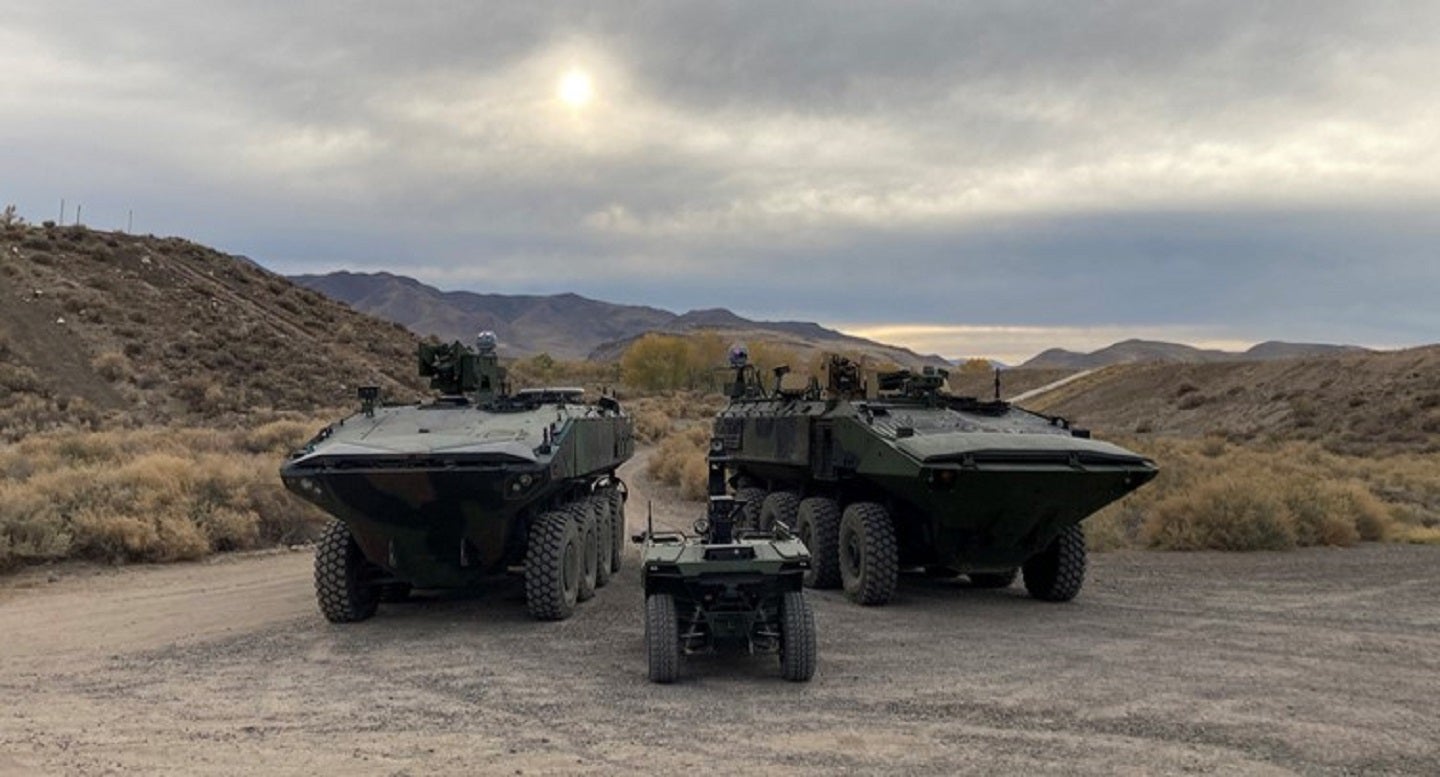
BAE Systems and IAI/ELTA Systems demonstrated the manned-unmanned teaming (MUM-T) of the Amphibious Combat Vehicle (ACV) C4UAS and the Rex Mk II unmanned infantry combat support system.
The teaming technology between both vehicles aimed to enhance mission effectiveness through greater situational awareness and decision-making capabilities.
BAE Systems said that this MUM-T demo “shows the versatility of the built-in growth capacity in the ACV C4UAS.”
The ACV is an amphibious platform built to meet the operational needs of the US Marine Corps, allowing space for new capabilities as technology evolves such as reconnaissance, electronic warfare, anti-air and uncrewed aerial systems integration.
The Rex Mk II system is an unmanned autonomous vehicle that provides direct support to manoeuvring infantry units. It can perform a variety of tasks including tactical logistic support; tactical intelligence, surveillance and reconnaissance; operating lethal weapons through target acquisition and evacuating wounded marines.
Global land vehicles market heads toward MUM-T
The ‘Global Military Land Vehicles Market’, according to GlobalData, is valued at $20.8bn in 2023 and will grow at a compound annual growth rate (CAGR) of 4.2% to reach a value of $31.3bn by 2033. The cumulative spending on military land vehicles globally is anticipated to be valued at $291.5bn over the forecast period.
The demand for military land vehicles is expected to be driven by the European region, especially in countries such as Russia, Poland, the UK, France, Germany, and Turkey, which are re-vamping their armoured vehicle fleets. Major military forces around the world are currently undertaking modernisation efforts to replace their decades-old platforms to counter more modern and sophisticated threats.
MUM-T tactics would prove to be a real benefit in conflicts such as the war in Ukraine, where attritional warfare was fought bitterly in battlespaces such as Bakhmut. The benefits of the demo would enable forces to integrate new technologies as they emerge, while benefitting from the autonomy of the Rex.
While remote weapons stations have become more common on armored vehicles over the last decade, military forces such as the US Army and the Russian Army have pursued the integration of fully remote-operational capabilities for their land vehicles.
This capability increases the survivability of mechanised troops and vehicle crews by allowing the driver to control the platform remotely from another vehicle or a reinforced command post located further away from the front lines. GlobalData tells us that this capability will also allow MUM-T concepts to be applied in future military vehicle warfare operations.







